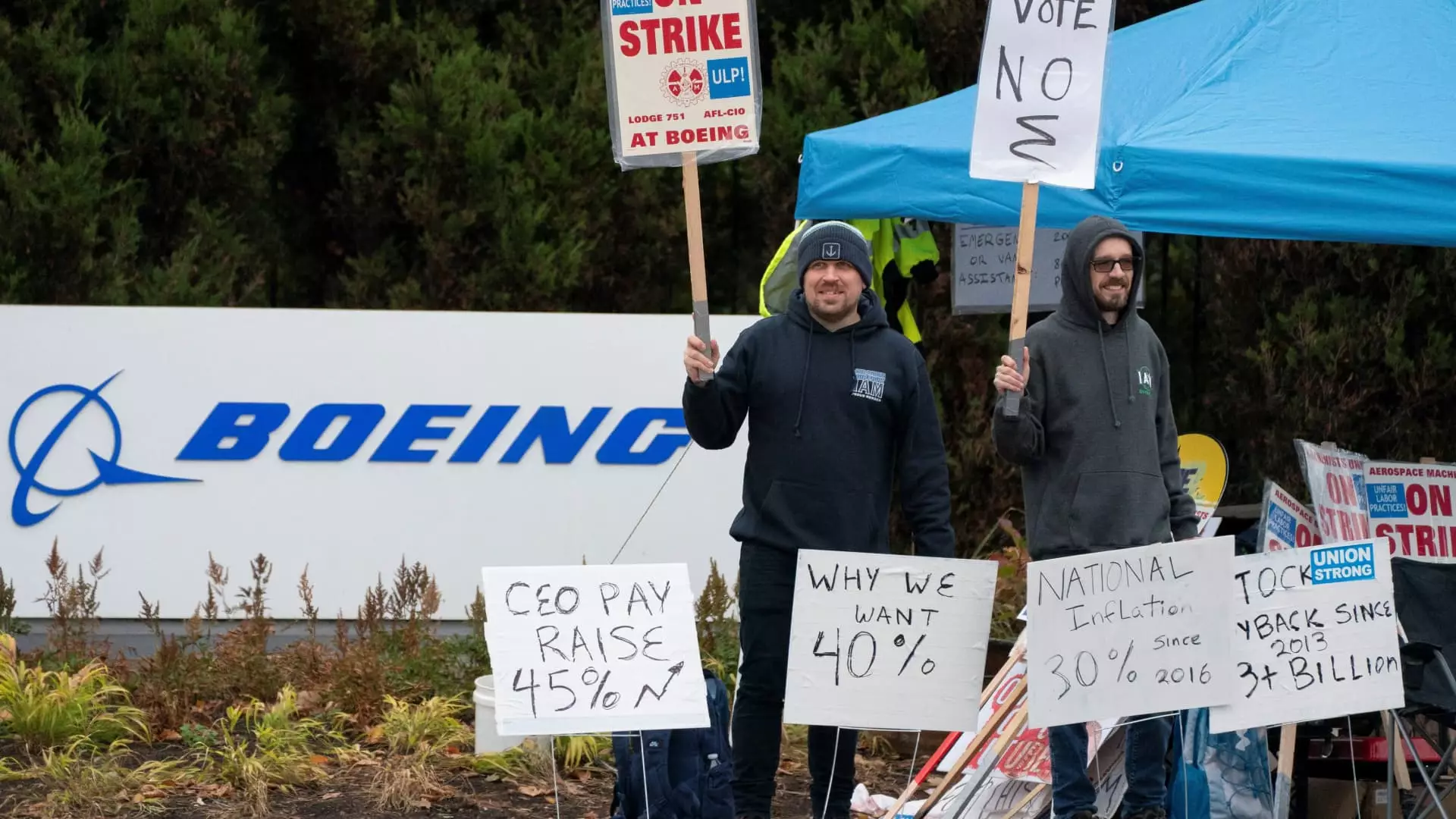The tension between Boeing and its machinists’ union has reached a critical juncture after a protracted strike lasting over seven weeks. Sparked by dissatisfaction over wages and working conditions, more than 32,000 machinists in the Seattle area walked off the job on September 13. This collective action not only highlights the struggles of labor at a historic American company but also serves as a reflection of the broader socioeconomic challenges faced by workers across multiple industries. The strike has become emblematic of the ongoing conflict between labor rights and corporate profits, particularly in a period marked by rising living costs in the Pacific Northwest.
With growing urgency, Boeing and the International Association of Machinists and Aerospace Workers District 751 have tabled a new settlement proposal aimed at resolving the labor standoff. The proposed contract enhances wages significantly, raising worker pay by 38% over four years, an increase from the prior 35% offer. This translates to an overall pay increase of nearly 44% when factoring in compounding affects, an impressive concession by the company given its current financial tribulations. The union has emphasized the importance of ratifying this contract, urging its members to consider the potential repercussions of prolonging the strike, which could lead to a regression in bargaining power.
For Boeing, the ramifications of this strike extend far beyond labor relations; they spill into financial performance and operational stability. The aerospace giant reported staggering losses of over $6 billion in the last quarter alone, attributing much of this downturn to strain from the ongoing strike and persistent production issues. As Boeing struggles to innovate and maintain its position as a global leader in aircraft manufacturing, getting workers back into factories is not just an operational priority but a financial necessity. The company’s CEO, Kelly Ortberg, has publicly highlighted the need to refocus on production and stabilizing the business, emphasizing the interconnectedness of employee welfare and corporate success.
Moreover, the involvement of the Biden administration underscores the ramifications of this strike on the national economy. With aircraft manufacturing being a critical sector for U.S. exports, Acting Labor Secretary Julie Su’s engagement in the negotiations speaks to the importance of reaching a resolution quickly. This involvement also reflects a wider governmental interest in labor relations, as demonstrated by President Biden’s supportive remarks towards the union’s demands. His affirmation that machinists deserve robust contracts highlights a growing recognition of labor’s historical sacrifices in the face of corporate challenges.
One major driver behind the machinists’ demands for higher wages is the soaring cost of living in the Seattle metropolitan area, exacerbated by the competitive job market fueled by tech giants such as Microsoft and Amazon. Workers are increasingly aware that wages must keep pace with these economic pressures, driving them to negotiate assertively for fair compensation. Boeing’s promise to remain committed to manufacturing in the Puget Sound region is undermined slightly by grievances surrounding the relocation of 787 Dreamliner production to a non-union facility in South Carolina.
The outcome of the upcoming vote on the new proposal will undoubtedly shape both Boeing’s future and the trajectory of labor relations within the aerospace industry. While the immediate financial and operational challenges are pressing, this situation signals a potential turning point for unions advocating for better working conditions across America. If the contract is ratified, it may set a precedent for how companies navigate labor negotiations in a climate where workers are increasingly vocal about their rights and needs. Conversely, a rejection could lead to further strikes, deepening divisions and complicating Boeing’s recovery efforts.
The interplay between labor demands and corporate strategies has never been more apparent than in the current situation at Boeing. The outcome of these negotiations, informed by economic realities and cultural shifts within the workforce, will echo far beyond factory floors, influencing labor relations across multiple sectors in the years to come. The urgency is clear—Boeing must find a way to balance its commercial aspirations with the pressing demands of its workforce amidst an evolving economic landscape.

